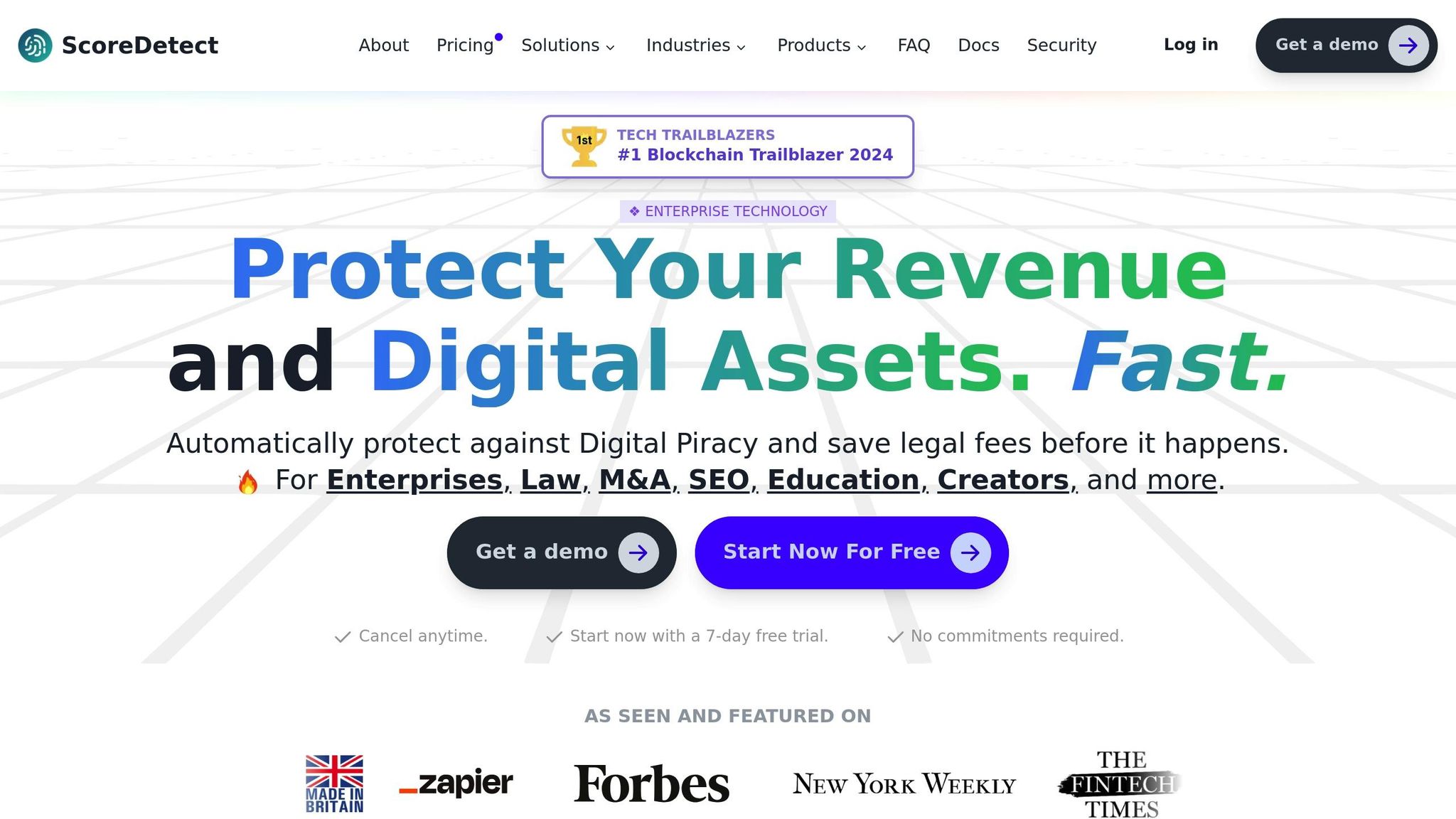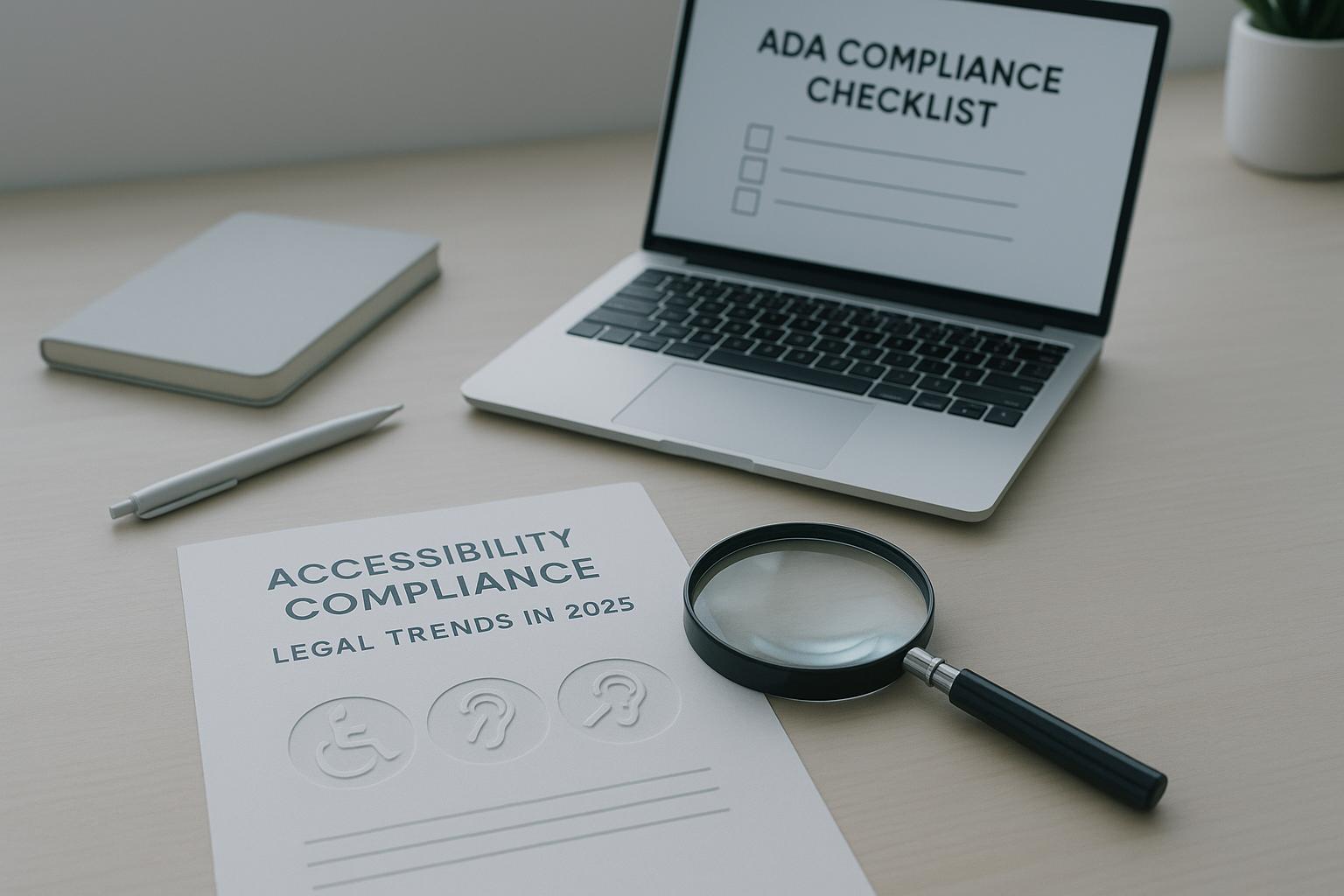Blockchain watermarking is reshaping how digital assets are protected. It combines invisible watermarking with blockchain’s tamper-proof records to secure ownership and prevent piracy. Tools like ScoreDetect lead the way by offering features such as automated content monitoring, invisible watermarks, and blockchain verification. With a 95% success rate in detecting misuse and 96% in takedown actions, these tools are ideal for creators, businesses, and industries like education and media. While challenges like setup complexity and energy concerns exist, the long-term benefits – like permanent ownership proof and efficient workflows – make blockchain watermarking a strong choice for securing digital content.
DIP Lecture 21: Digital watermarking
Key Features to Look for in Blockchain Watermarking Tools
When choosing blockchain watermarking tools, it’s important to focus on their technical strengths. With the blockchain market projected to hit $60 billion by 2024 [2], the need for reliable content protection tools has never been more apparent. Below are the standout features that set effective solutions apart.
Immutability and Proof of Ownership
One of the most critical features of blockchain watermarking tools is their ability to create tamper-proof ownership records. This is achieved through timestamping transactions and securing them with cryptographic hash functions [2][3]. Even the slightest alteration to the data generates a completely different hash value, making tampering instantly noticeable. Additionally, new blocks are linked using metadata, creating a secure and unchangeable chain of ownership [2][3].
Consensus mechanisms ensure all users agree on the blockchain’s current state [2], while decentralization eliminates vulnerabilities associated with a single point of failure [1].
| Characteristic | Traditional Databases | Blockchain |
|---|---|---|
| Authority | Centralized | Distributed/Decentralized |
| Robustness | Single point of failure | No single point of failure |
| Data Persistence | Non-Persistent | Immutable |
| Public Verifiability | Limited data integrity | Maintains data integrity and transparency |
| Audit Trail | History not readily available | Traceable history of records and ownership |
Invisible and Non-Invasive Watermarking
The best watermarking tools use invisible watermarking, embedding data within digital content in a way that’s undetectable to the human eye [4]. This method protects digital assets without compromising their appearance or user experience [7]. Modern invisible watermarking is also highly resilient, withstanding compression, cropping, and scaling [4].
"Visible watermarks can be removed with AI, but invisible unremovable watermarks protect content without altering its appearance." – Imatag [7]
"Invisible watermarking certifies the origin of images and videos, even when metadata is removed. It enables source verification, combats misinformation, and supports C2PA compliance – crucial in an era of AI-generated content and manipulated media." – Imatag [4]
Invisible watermarks go beyond simple protection. They help track asset usage, verify compliance with licensing agreements, and prove authenticity [6]. They also support forensic analysis and traitor tracing, identifying the source of unauthorized distribution [4][7]. The scale of this technology is evident in Digimarc‘s use of digital watermarks on over 1 trillion physical and digital items [5].
Integration is another key aspect, ensuring seamless and automated protection for digital assets.
Automation and Integration
Modern blockchain watermarking tools excel in automating processes like embedding, discovery, and takedown. Automated discovery is essential for large-scale content protection, with advanced tools using intelligent web scraping to achieve 95% success rates in bypassing prevention measures. Takedown efforts are streamlined through automated delisting notices, which boast over 96% success rates [8], drastically reducing the manual workload involved in addressing content theft.
Integration capabilities enhance the usability of these tools. Top solutions often provide:
- WordPress plugins to automatically capture and secure published or updated content on the blockchain.
- Zapier integration with over 6,000 web apps for automated workflows.
- API access for custom integrations with existing content management systems.
- IPFS integration for decentralized, secure storage that ensures data availability [1].
Smart contracts further enhance functionality by managing transactions and access control. These contracts automatically activate protection measures when content is accessed or shared [1]. By storing watermarked content and encryption keys on IPFS, these systems offer decentralized, secure storage that fits seamlessly into existing digital workflows [1]. This level of automation transforms content protection from a reactive task into a proactive, continuous process, giving creators and businesses peace of mind.
ScoreDetect: A Leading Solution in Blockchain Watermarking

ScoreDetect takes the concept of blockchain’s unchangeable records and applies it to digital content protection, offering a solution that stands out in today’s digital landscape. Recognized with the prestigious Tech Trailblazers Awards 2024 for Blockchain[10], ScoreDetect delivers a cutting-edge platform that combines invisible watermarking with blockchain technology. This powerful combination meets the growing demand for safeguarding digital assets across various sectors, including academia, content creation, cybersecurity, and government services. Here’s a closer look at what makes ScoreDetect a standout in its field.
Complete Content Protection
ScoreDetect’s robust approach to content protection focuses on invisible watermarking paired with blockchain checksum verification. This combination ensures an unalterable record of ownership without ever storing the original digital asset, providing both security and privacy. By using the eco-conscious SKALE blockchain, which operates with zero gas fees, the platform generates a certificate containing critical details such as the checksum, blockchain transaction URL, and verification methods. This ensures compatibility with a variety of formats, including text, images, audio, and video.
"ScoreDetect is exactly what you need to protect your intellectual property in this age of hyper-digitization. Truly an innovative product, I highly recommend it!"
– Imri, Startup SaaS, CEO
Automated Discovery and Takedown
ScoreDetect doesn’t just protect content – it actively monitors and enforces ownership. Its AI-powered discovery system achieves an impressive 95% success rate in bypassing prevention measures, identifying infringements with precision. Once a violation is detected, the platform’s automated takedown feature springs into action, boasting a success rate of over 96%[9]. This approach ensures swift and effective responses, backed by quantitative evidence of infringement.
"As a SaaS company owner, I find ScoreDetect to be a highly valuable tool for ensuring the integrity of our digital content."
– Joshua Chung, Startup Consultancy, CEO
Easy Workflow Integration
Beyond its security features, ScoreDetect simplifies implementation with seamless workflow integration. Through Zapier, it connects with over 6,000 web apps, making it easy for businesses to incorporate its tools into their existing processes. For WordPress users, the "Timestamps" plugin automatically captures and secures proof of ownership for every article published or updated – while also boosting SEO by enhancing Google E-E-A-T signals. For developers, API access and the ability to export certificates for offline storage provide additional customization options.
"With ScoreDetect, I can take pictures for my travel blog and be confident that nobody will claim them as theirs. I can always prove that I am the author."
– Kyrylo Silin, SaaS Founder, CEO
ScoreDetect offers a 7-day free trial, giving businesses the opportunity to explore its comprehensive content protection features before upgrading to enterprise-level solutions.
sbb-itb-738ac1e
Use Cases for Blockchain Watermarking Tools
Blockchain watermarking is proving to be a game-changer in protecting digital assets across various industries. In the U.S., online piracy costs businesses billions of dollars every year, fueling the demand for blockchain-based solutions like ScoreDetect. Below are some key ways different sectors are using ScoreDetect to safeguard their digital content.
Academics and Education
The academic world faces ongoing challenges like content piracy and plagiarism, and ScoreDetect offers a robust solution. By using blockchain timestamping and invisible watermarking, it protects academic materials while automatically recording published works to establish ownership and even improve SEO rankings. With a 95% success rate in detecting unauthorized use, ScoreDetect ensures that stolen course materials or lecture recordings are identified quickly. Its automated takedown feature, boasting a 96% success rate, streamlines the removal of pirated content.
Media and Entertainment
For media and entertainment, ScoreDetect embeds invisible watermarks in multimedia files, creating tamper-proof records that make it easier to trace unauthorized access. The platform’s integration with Zapier simplifies workflows for high-volume producers, making it an attractive tool for content creators.
"We had this idea of using Bitcoin as a promise of integrity for media, by making people understand they risk being identified when taking a piece of content… We put a piece of Bitcoin inside the media, which anyone in the world can claim, and when they do, we’re alerted to the leak. So rather than building a network of piracy hunters, anyone in the world can be a potential informer."
ScoreDetect’s blockchain technology allows for immutable tracking of viewer access, purchases, and shares, helping to pinpoint leaks and unauthorized use. With its ability to integrate with over 6,000 web applications via Zapier, it fits seamlessly into existing workflows for managing content.
Ecommerce and Digital Business
In the ecommerce sector, ScoreDetect secures digital assets by embedding transactional data directly into the blockchain, providing an unalterable audit trail. Its API and certificate export options make integration straightforward while allowing for offline documentation.
The platform’s decentralized watermarking system records buyer identities, transaction times, and redistribution history on the blockchain, ensuring a reliable and unforgeable trail. This is crucial for tracking digital assets across the web. As fintech and blockchain expert Viktor Prokopenya explains:
"Blockchain is not in itself the technology to fight piracy – it is just a ledger that can help to track and establish clearly who owns what. Then it is up to governments to establish easy litigation mechanisms to allow artists to complain if there is an issue."
- Viktor Prokopenya [12]
ScoreDetect also offers a 7-day free trial, making it accessible for organizations of all sizes to explore its capabilities before committing to a full-scale implementation.
Pros and Cons of Blockchain Watermarking
Blockchain watermarking tools, like ScoreDetect, offer robust protection for digital assets. However, it’s essential to weigh both the benefits and the challenges. Blockchain’s ability to create tamper-proof records and provide unchangeable proof of ownership is a major advantage. On the flip side, any mistakes made during the initial data entry are permanent and cannot be corrected.
Another concern is energy usage. Blockchain technology, especially in its current form, is known for high energy demands, raising questions about its environmental impact compared to other methods [14].
The steep learning curve is also a hurdle. Implementing blockchain solutions often requires advanced technical knowledge, which can be a barrier for organizations without experienced professionals. Recognizing this, ScoreDetect focuses on user-friendly interfaces and automated workflows to make the technology more accessible [13]. These efforts aim to simplify blockchain adoption and address common challenges.
Comparison Table of Pros and Cons
Here’s a quick breakdown of the advantages and challenges associated with blockchain watermarking:
| Advantages | Challenges |
|---|---|
| Immutable proof of ownership – Creates permanent, tamper-proof records to establish copyright ownership | Implementation complexity – Demands technical expertise and careful planning for successful deployment |
| Invisible watermarking – Protects content without affecting file quality or user experience | High initial investment – While setup costs can be high, long-term savings often offset these expenses |
| Automated detection and takedown – ScoreDetect achieves a 95% success rate in discovery and 96% in takedown actions | Blockchain dependency – Performance depends on the stability and consensus mechanisms of the blockchain network |
| Seamless integration – Compatible with over 6,000 web apps via Zapier, making it easy to fit into existing workflows | Scalability issues – Some blockchain networks struggle with high transaction volumes, impacting performance |
| Global accessibility – Offers round-the-clock protection across international jurisdictions | Regulatory uncertainty – Changing legal frameworks may affect how blockchain solutions are implemented |
| Cost reduction – Cuts out intermediaries and lowers transaction costs over time | Key management risks – Maintaining private key security requires strict protocols and constant vigilance |
| Enhanced efficiency – Automates processes like content monitoring and takedown notices | Interoperability problems – Different blockchain networks may not work well together |
Despite these obstacles, blockchain technology shows promise. A 2023 Deloitte report highlights its potential to save billions of dollars in the financial sector globally [13]. This suggests that, when implemented thoughtfully, the benefits can far outweigh the challenges.
Success in blockchain watermarking depends on thorough research and a clear understanding of specific use cases [13]. Priorities should include developing energy-efficient models, improving scalability, and ensuring seamless integration [14]. Tools like ScoreDetect provide a practical entry point for exploring blockchain watermarking without requiring a hefty upfront investment.
Conclusion
Blockchain watermarking is redefining how digital assets are secured. By combining the unchangeable nature of blockchain with advanced watermarking techniques, it creates tamper-resistant ownership records while maintaining the quality of the content and ensuring a smooth user experience.
One standout example is ScoreDetect, which showcases the potential of modern blockchain watermarking. With an impressive 95% content discovery rate and 96% takedown success, it integrates effortlessly into workflows, making it a practical solution for everyone – from solo creators to large-scale enterprises.
This technology isn’t just about general media protection. Industries with strict compliance needs, like medical imaging, are finding immense value. For instance, in federated learning, robust and reversible watermarking paired with blockchain ensures copyright protection and data traceability throughout the asset’s lifecycle. This demonstrates its effectiveness in handling sensitive and regulated environments [15].
While challenges like implementation complexity and upfront costs exist, the benefits far outweigh the hurdles. The automation and permanent proof of ownership offered by blockchain watermarking provide long-term value. Additionally, its resilience against various attempts to modify content ensures watermarks remain detectable even after alterations [16].
By integrating invisible watermarking with automated discovery, tools like ScoreDetect offer a user-friendly way to protect intellectual property. These solutions require minimal technical expertise but deliver powerful results, helping organizations safeguard their assets and maintain control in a highly competitive digital landscape.
Adopting blockchain watermarking is a forward-thinking move, enabling organizations to secure their content and manage its distribution effectively for the future.
FAQs
How does blockchain watermarking protect digital assets from tampering?
Blockchain watermarking works by generating permanent, time-stamped records that confirm both ownership and authenticity of digital assets. These records are stored on a decentralized ledger, making them highly resistant to alteration or forgery.
With this system in place, any unauthorized changes to the content are easy to detect. This adds a strong layer of security against tampering and reinforces confidence in the reliability of your digital assets.
What challenges should I consider when using blockchain watermarking tools like ScoreDetect?
Implementing blockchain watermarking tools, such as ScoreDetect, isn’t without its hurdles. One of the main challenges lies in scalability. Managing large amounts of digital content can strain the system, leading to slower processing times and increased costs if the setup isn’t optimized. On top of that, blockchain’s limited storage capacity may affect performance as the network grows.
Another important aspect to keep in mind is integrating blockchain technology with your existing content management systems. Achieving smooth compatibility while safeguarding your digital assets takes careful planning and a solid understanding of the technical requirements. Tackling these issues head-on can help you get the most out of blockchain watermarking while keeping potential obstacles in check.
How do industries like education and media benefit from blockchain watermarking tools?
Blockchain watermarking tools bring valuable solutions to industries like education and media, ensuring secure and tamper-resistant management of digital assets.
In the education sector, these tools play a key role in verifying academic credentials, reducing fraud, and simplifying administrative tasks. They ensure that academic records remain trustworthy and authentic, which is crucial for both institutions and students.
For the media industry, blockchain watermarking protects intellectual property by embedding invisible watermarks into digital content. This not only helps prevent piracy but also provides clear evidence of ownership, making it easier to address unauthorized usage. By harnessing blockchain’s secure and transparent framework, both industries can improve operational efficiency, cut costs, and protect the integrity of their digital assets.

